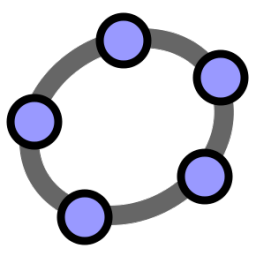$
\newcommand{\parallele}{\sslash}
\newcommand{\para}{\sslash}
\newcommand{\er}{\textsuperscript{er}\ }
\newcommand{\eme}{\textsuperscript{čme}\ }
\newcommand{\ere}{\textsuperscript{čre}\ }
\newcommand{\snd}{\textsuperscript{nd}\ }
\newcommand{\snde}{\textsuperscript{nde}\ }
\newcommand{\iem}{\textsuperscript{ičme}\ }
\newcommand{\x}{\times}
\newcommand{\ie}{\leqslant}
\newcommand{\se}{\geqslant}
\newcommand{\qqquad}{\quad\qquad}
\newcommand{\N}{\mathbb N}
\newcommand{\Z}{\mathbb Z}
\newcommand{\D}{\mathbb D}
\newcommand{\Q}{\mathbb Q}
\newcommand{\R}{\mathbb R}
\newcommand{\C}{\mathbb C}
\newcommand{\F}{\mathbb F}
\newcommand{\K}{\mathbb K}
\newcommand{\U}{\mathbb U}
%\newcommand{\Code}[1]{ {\verb+#1+} }
\newcommand{\Code}[1]{{\ttfamily #1}}
%\newcommand{\partent}{\mathsf{ent}}
\newcommand{\E}{\mathsf{E}}
%\newcommand{\alea}{\verb?alea?}
\newcommand{\partent}{\text{\Code{ent}} }
\newcommand{\alea}{\text{\Code{alea}} }
\newcommand{\epsi}{\varepsilon} % epsilonn
\newcommand{\f}{\othervarphi} % fonction phi
\newcommand{\g}{\gamma}
\newcommand{\al}{\alpha}
\newcommand{\de}{\delta}
\newcommand{\De}{\Delta}
\newcommand{\Ga}{\Gamma}
\newcommand{\La}{\Lambda}
\newcommand{\la}{\lambda}
\renewcommand{\o}{\otheromega}
\newcommand{\si}{\sigma}
\newcommand{\Ta}{\Theta}
\newcommand{\teta}{\theta}
\renewcommand{\O}{\Omega}
\newcommand{\prive}{\setminus}%{\backslash}
\newcommand{\union}{\cup}
\newcommand{\inter}{\cap}
\newcommand{\vide}{\varnothing}
\newcommand{\card}{\mathop{\rm card}\nolimits}
\newcommand{\paire}[2]{\{#1\, ;\, #2\}}
\newcommand{\Paire}[2]{\left\{#1\, ;\, #2\right\}}
\newcommand{\enstrois}[3]{\{#1\, ;\, #2\, ;\, #3\}}
\newcommand{\Enstrois}[3]{\left\{#1\, ;\, #2\, ;\, #3\right\}}
\newcommand{\ensquatre}[4]{\{#1\, ;\, #2\, ;\, #3\, ;\, #4\}}
\newcommand{\Ensquatre}[4]{\left\{#1\, ;\, #2\, ;\, #3\, ;\, #4\right\}}
\newcommand{\triplet}[3]{(#1\, ;\, #2\, ;\, #3)}
\newcommand{\quadruplet}[4]{(#1\, ;\, #2\, ;\, #3\, ; #4)}
\newcommand{\nuplet}[2]{(#1\, ;\,\ldots\, ;\, #2)}
\newcommand{\Nuplet}[2]{\left(#1\, ;\,\ldots\, ;\, #2\right)}
\newcommand{\ensemble}[2]{\{#1\, ;\,\ldots\, ;\, #2\}}
\newcommand{\interieur}[1]{\ring{#1}}
\newcommand{\ens}[1]{\left\{\,#1\,\right\}}
\newcommand{\tq}{ \ \ \textrm{t.q} \ \ }
\newcommand{\tqc}{ \textrm{t.q} }
\newcommand{\Frac}[2]{\frac{\disp #1}{\disp #2}}
\newcommand{\tvi}[2]{\vrule height #1 depth #2 width 0pt}
\newcommand{\rond}{\circ}
\newcommand{\ps}{\cdot}
\newcommand{\ovra}[3]{\mkern #1mu\overrightarrow{\mkern -#1mu #2\mkern -#3mu}\mkern #3mu}
\newcommand{\ovla}[3]{\mkern #1mu\overleftarrow{\mkern -#1mu #2\mkern -#3mu}\mkern #3mu}
\newcommand{\delim}[3]{\raise #1\hbox{$\left #2\vbox to #3{}\right.$}}
\renewcommand{\(}{\left( }
\renewcommand{\)}{\right) }
\newcommand{\oc}{\left[}
\newcommand{\fc}{\right]}
\newcommand{\norme}[1]{\| #1 \|}
\newcommand{\normebis}[1]{\delim{2pt}{\|}{9pt}\! #1\delim{2pt}{\|}{9pt}}
\newcommand{\normetriple}[1]{\left |\kern -.07em\left\| #1\right |\kern -.07em\right\|}
\newcommand{\valabs}[1]{\delim{2pt}{|}{9pt}#1\delim{2pt}{|}{9pt}}
\newcommand{\Abs}[1]{\left \lvert#1\right \rvert}
\newcommand{\dist}[2]{\textrm{d}(#1\textrm{;\,} #2)}
\newcommand{\limit}[2]{\displaystyle\lim_{#1} #2}
\newcommand{\limitx}[3]{\displaystyle\lim_{#1\to #2} #3}
\newcommand{\limitxinf}[3]{\displaystyle\lim_{#1\build{\to}_{<}^{} #2} #3}
\newcommand{\limitxsup}[3]{\displaystyle\lim_{#1\build{\to}_{>}^{} #2} #3}
\newcommand{\tend}[2]{\displaystyle\build\longrightarrow_{#1\rightarrow #2}^{}}
\newcommand{\ds}{\displaystyle}
\newcommand{\fonc}[4]{#1\ :\begin{array}{rll} #2 &\to �\\ x& \mapsto � \end{array}}
\newcommand{\Fonc}[5]{#1\ :\begin{array}{rll} #2 &\to �\\ #4& \mapsto � \end{array}}
\newcommand{\limd}[2][x]{\ds\lim_{{#1\to #2}\atop{#1>#2}} }
\newcommand{\limcd}[1]{\ds\lim_{#1^+} }
\newcommand{\limg}[2][x]{\ds\lim_{{#1\to #2}\atop{#1<#2}} }
\newcommand{\limcg}[1]{\ds\lim_{#1^-} }
\newcommand{\limc}[1]{\ds\lim_{#1} }
\newcommand{\lin}{\ds\lim_{n\to +\infty}}
\newcommand{\Lim}[2][x]{\displaystyle{\lim_{#1 \to #2}}}
\newcommand{\Li}[2]{\left.\begin{array}{lcr} #1\\ #2 \end{array}\right\}}
\newcommand{\somme}[3][i]{\sum\limits_{\substack{#1=#2}}^{#3}}
\newcommand{\Tendvers}[2][h]{\underset{#1\rightarrow #2}{\longrightarrow}}
\newcommand{\un}{{(u_n)}_{n\in\N}\ } % suite un {(t_{n})}_{n\in\N}
\newcommand{\unstar}{{(u_n)}_{n\in\N^{\ast}}\ } % suite un
\newcommand{\vn}{{(v_n)}_{n\in\N}\ } %suite vn
\newcommand{\wn}{{(w_n)}_{n\in\N}\ } %suite wn
\newcommand{\tn}{{(t_n)}_{n\in\N}\ } %suite tn
\newcommand{\sn}{{(s_n)}_{n\in\N}\ } %suite tn
\newcommand{\rn}{{(r_n)}_{n\in\N}\ } %suite tn
\newcommand{\xn}{{(x_n)}_{n\in\N}\ } %suite tn
\newcommand{\yn}{{(y_n)}_{n\in\N}\ } %suite tn
\newcommand{\zn}{{(z_n)}_{n\in\N}\ } %suite tn
\newcommand{\an}{{(a_n)}_{n\in\N}\ } %suite tn
\newcommand{\bn}{{(b_n)}_{n\in\N}\ } %suite tn
\newcommand{\cn}{{(c_n)}_{n\in\N}\ } %suite tn
\newcommand{\dn}{{(d_n)}_{n\in\N}\ } %suite tn
\newcommand{\en}{{(e_n)}_{n\in\N}\ } %suite tn
\newcommand{\enstar}{{(e_n)}_{n\in\N^{\ast}}\ } % suite un
%
%
%
%
%
%
%
%%%%%%%%%%%%%%%%%%%%%%%%%%%%%%%%%%%%%%%%%%%%%%%%%%%%%%%%%%%%%%%%%%%%%%%%%% Equivalent
\newcommand{\equivalent}[1]{\build\sim_{#1}^{}}
%
%
%
%
%%%%%%%%%%%%%%%%%%%%%%%%%%%%%%%%%%%%%%%%%%%%%%%%%%%%%%%%%%%%%%%%%%%%%%%%%% o et O
\renewcommand{\o}[2]{\build o_{#1\to #2}^{}}
\renewcommand{\O}[2]{\build O_{#1\to #2}^{}}
%
%
%
%
%%%%%%%%%%%%%%%%%%%%%%%%%%%%%%%%%%%%%%%%%%%%%%%%%%%%%%%%%%%%%%%%%%%%%%%%%% Displaystyle
\newcommand{\disp}{\displaystyle}
%
%
%
%
%%%%%%%%%%%%%%%%%%%%%%%%%%%%%%%%%%%%%%%%%%%%%%%%%%%%%%%%%%%%%%%%%%%%%%%%%% Signes d'equivalence et d'implication
\newcommand{\equivaut}{\Longleftrightarrow}
\newcommand{\equi}{\Leftrightarrow}
\newcommand{\implique}{\Longrightarrow}
\newcommand{\impli}{\Rightarrow}
\newcommand{\ssi}{\textrm{ \ ssi \ }}
\newcommand{\idest}{\quad \textrm{i.e} \quad}
\newcommand{\cad}{\quad \textrm{c-ŕ-d} \quad}
%
\newcommand{\ssic}{\textrm{ssi} }
\newcommand{\idestc}{\textrm{i.e} }
\newcommand{\cadc}{\textrm{c-ŕ-d}}
\newcommand{\maxi}{ \textrm{max}}
\newcommand{\sgn}{\textrm{sgn}}
%
%
%
%
%%%%%%%%%%%%%%%%%%%%%%%%%%%%%%%%%%%%%%%%%%%%%%%%%%%%%%%%%%%%%%%%%%%%%%%%%% Signe associe
\newcommand{\associe}{\longmapsto}
\newcommand{\asso}{\mapsto}
%
%%%%%%%%%%%%%%%%%%%%%%%%%%%%%%%%%%%%%%%%%%%%%%%%%%%%%%%%%%%%%%%%%%%%%%%%%% Angles
\renewcommand{\angle}[1]{\widehat{#1}}
\newcommand{\anglevec}[2]{(\vec #1\, ,\,\vec #2)}
\newcommand{\Anglevec}[2]{(\V{#1}\, ,\,\V{#2})}
\newcommand{\anglecouple}[2]{\left( #1\, ,\, #2 \right) }
%\newcommand{\anglevecteur0}[3][black]{(\widehat{\vec{#2}\, , \, \textcolor{#1}{\vec{#3}}})}
%\newcommand{\anglevecteur}[4][black]{\anglevecteur0{#2}{ \textcolor{#1}{#3} }{#4} }
\newcommand{\anglevecteur}[2]{(\widehat{\vec{#1}\, , \, \vec{#2}} ) }
%\newcommand{\anglevecteurcouleur}[4]{(\textcolor{#1}{\vec{#3}}\, , \, \textcolor{#2}{\vec{#4}}) }
\newcommand{\Anglevecteur}[2]{\(\widehat{\V{#1},\V{#2}}\)}
\newcommand{\rad}{ \,\,\textrm{rad} }
\newcommand{\mes}{\textrm{mes} }
\newcommand{\°}{\degres}
\newcommand{°}{\degres}
\newcommand{\Mes}[1]{\mes\,\widehat{#1}}
\newcommand{\mesvec}[2]{\textrm{mes}\(\vec{#1} \, , \, \vec{#2}\)}
\newcommand{\mesvecteur}[2]{\textrm{mes}\anglevecteur{#1}{#2}}
\newcommand{\mesVec}[2]{\textrm{mes}\(\V{#1} \, , \, \V{#2}\)}
\newcommand{\mesarc}[1]{\textrm{mes}\(\widehat{#1}\)}
\newcommand{\mesarco}[1]{\textrm{mes}\(\arcoriente{#1}\)}
\newcommand{\ao}[2]{\left(#1\, , \, #2\right)}
%\newcommand{\Mes}[1]{%
% \ensuremath{%
% \mathrm{mes}
% \DecalV{\widehat{#1}}
% }}
%\DeclareTextSymbol{\degree}{T1}{6}
%\DeclareTextSymbol{\degre}{OT1}{23}
%%%%%%%%%%%%%%%%%%%%%%%%%%%%%%%%%%%%%%%%%%%%%%%%%%%%%%%%%%%%%%%%%%%%%%%%%% Vecteurs
%\newcommand{\vecteur}[1]{\ovra 0{#1}0}
\newcommand{\prodscal}[2]{<#1,#2>}
\newcommand{\prodvec}[2]{#1\wedge #2}
\newcommand{\vectoriel}[2]{\prodvec{\vec #1}{\vec #2}}
\newcommand{\Vectoriel}[2]{\prodvec{\vecteur{#1}}{\vecteur{#2}}}
\newcommand{\prodmixte}[3]{\big[#1, #2, #3\big]}
\newcommand{\mixte}[3]{\prodmixte{\vec #1}{\vec #2}{\vec #3}}
\newcommand{\Mixte}[3]{\prodmixte{\vecteur{#1}}{\vecteur{#2}}{\vecteur{#3}}}
\newcommand{\V}[1]{\ovra 0{#1}0}
%
\newcommand{\test}[2]{#1^2-#2^2}
%
%%
%%%%%%%%%%%%%%%%%%%%%%%%%%%%%%%%%%%%%%%%%%%%%%%%%%%%%%%%%%%%%%%%%%%%%%%%%% Repčres (O,i), (O,i,j), (O,u,v), (O,I,J) et quelconques
\newcommand{\Oi}{(O\, ;\,\vec\imath\,)}
\newcommand{\Oj}{(O\, ;\,\vec\jmath\,)}
\newcommand{\Oij}{(O\, ;\,\vec\imath\, ;\vec\jmath\,)}
\newcommand{\Aij}{(A\, ;\,\vec\imath\, ;\vec\jmath\,)}
\newcommand{\Omegaij}{(\Omega\, ;\,\vec\imath\, ;\vec\jmath\,)}
\newcommand{\Ai}{(A\, ;\,\vec\imath\,)}
\newcommand{\Aj}{(A\, ;\,\vec\jmath\,)}
\newcommand{\Ojk}{(O\, ;\,\vec\jmath\, ;\vec k\,)}
\newcommand{\Oik}{(O\, ;\,\vec\imath\, ;\vec k\,)}
\newcommand{\Ouv}{(O\, ;\,\vec u\, ;\vec v\,)}
\renewcommand{\ij}{(\vec\imath\, ;\vec\jmath\,)}
\newcommand{\ijk}{(\vec\imath\, ;\vec\jmath\, ;\vec k\,)}
\newcommand{\Oijk}{\big(O\, ;\,\vec\imath\, ;\vec\jmath\, ;\vec k\,\big)}
\newcommand{\oijk}{\big(o\, ;\,\vec\imath\, ;\vec\jmath\, ;\vec k\,\big)}
\newcommand{\OIJ}{(O\,;\, I\,;\, J\,)}
\newcommand{\repere}[3]{\big(#1\, ;\,\vecteur{#2} ;\vecteur{#3}\big)}
\newcommand{\reperesp}[4]{\big(#1\, ;\,\vecteur{#2} ;\vecteur{#3} ;\vecteur{#4}\big)}
%
\newcommand{\reperepol}[2]{\big(#1\, ;\,\vecteur{#2}\big)}
\newcommand{\reperesf}[3]{\big(#1\, ;\,#2 ; #3 \big)}
%
%Redéfinition de \longrightarrow
%\newcommand\longrightarrow{\mathrel{\raise .02em\hbox{$\relbar$}}\joinrel\rightarrow}
%
%
%
%
%
%%%%%%%%%%%%%%%%%%%%%%%%%%%%%%%%%%%%%%%%%%%%%%%%%%%%%%%%%%%%%%%%%%%%%%%%%% Aire d'une surface
\newcommand{\aire}[1]{%
\ensuremath{\mathscr{A}_{#1}}}
%
%
%
%
%%%%%%%%%%%%%%%%%%%%%%%%%%%%%%%%%%%%%%%%%%%%%%%%%%%%%%%%%%%%%%%%%%%%%%%%%% Volume d'un volume
\newcommand{\volume}[1]{%
\ensuremath{\mathscr{V}_{#1}}}
%
%
%
%
%
%%%%%%%%%%%%%%%%%%%%%%%%%%%%%%%%%%%%%%%%%%%%%%%%%%%%%%%%%%%%%%%%%%%%%%%%%% un ; avec un peu d'espace autour
\newcommand{\pv}{\ensuremath{\: ; \,}}
%
%
%
%
%%%%%%%%%%%%%%%%%%%%%%%%%%%%%%%%%%%%%%%%%%%%%%%%%%%%%%%%%%%%%%%%%%%%%%%%%% Intervalles
\newcommand{\interoo}[2]{]#1\, ;\, #2[}
\newcommand{\Interoo}[2]{\left]#1\, ;\, #2\right[}
\newcommand{\interof}[2]{]#1\, ;\, #2]}
\newcommand{\Interof}[2]{\left]#1\, ;\, #2\right]}
\newcommand{\interfo}[2]{[#1\, ;\, #2[}
\newcommand{\Interfo}[2]{\left[#1\, ;\, #2\right[}
\newcommand{\interff}[2]{[#1\, ;\, #2]}
\newcommand{\Interff}[2]{\left[#1\, ;\, #2\right]}
%
\newcommand{\of}[2]{\left] \,#1 \, ; \, #2 \,\right] }
\newcommand{\fo}[2]{\left[ \,#1 \, ; \, #2 \,\right[ }
\newcommand{\oo}[2]{\left] \,#1 \, ; \, #2 \,\right[ }
\newcommand{\ff}[2]{\left[ \,#1 \, ; \, #2 \,\right] }
%
%\newcommand\interentiers #1#2{[\! [#1\, ;\, #2]\! ]}
\newcommand{\interentiers}[2]{\llbracket #1\, ;\, #2\rrbracket}
%
%
%
%
%%%%%%%%%%%%%%%%%%%%%%%%%%%%%%%%%%%%%%%%%%%%%%%%%%%%%%%%%%%%%%%%%%%%%%%%%% autres intervalles
\newcommand{\Intff}[2]{\ensuremath{\left[#1\pv #2\right]}}
\newcommand{\Intfo}[2]{\ensuremath{\left[#1\pv #2\right[}}
\newcommand{\Intof}[2]{\ensuremath{\left]#1\pv #2\right]}}
\newcommand{\Intoo}[2]{\ensuremath{\left]#1\pv #2\right[}}
%
%
%
%
%%%%%%%%%%%%%%%%%%%%%%%%%%%%%%%%%%%%%%%%%%%%%%%%%%%%%%%%%%%%%%%%%%%%%%%%%% Coordonnées
%\newcommand{\coord}[2]{(#1\, ;\, #2)}
\newcommand{\bigcoord}[2]{\big(#1\, ;\, #2\big)}
\newcommand{\coord}[2]{\left(#1\, ;\, #2\right)}
\newcommand{\Coord}[2]{\left(#1\, ;\, #2\right)}
\newcommand{\coordesp}[3]{(#1\, ;\, #2\, ;\, #3)}
\newcommand{\bigcoordesp}[3]{\big(#1\, ;\, #2\, ;\, #3\big)}
\newcommand{\Coordesp}[3]{\left(#1\, ;\, #2\, ;\, #3\right)}
\newcommand{\coordpol}[2]{\left[#1\, ;\, #2\right]}
%
%
%
%
%%%%%%%%%%%%%%%%%%%%%%%%%%%%%%%%%%%%%%%%%%%%%%%%%%%%%%%%%%%%%%%%%%%%%%%%%% Coordonnées verticales dans le plan
\newcommand{\coordp}[2]{%
\begin{pmatrix}
#1 \\ #2
\end{pmatrix}}
%
%
%
%
%%%%%%%%%%%%%%%%%%%%%%%%%%%%%%%%%%%%%%%%%%%%%%%%%%%%%%%%%%%%%%%%%%%%%%%%%% Coordonnées verticales dans l'espace
\newcommand{\coordpp}[3]{%
\scalebox{.7}{%
\begin{pmatrix}
#1 \\ #2 \\ #3
\end{pmatrix}}}
%
%
%
%
%%%%%%%%%%%%%%%%%%%%%%%%%%%%%%%%%%%%%%%%%%%%%%%%%%%%%%%%%%%%%%%%%%%%%%%%%% Congruences
\newcommand{\congru}{\equiv}
%
%
%%%%%%%%%%%%%%%%%%%%%%%%%%%%%%%%%%%%%%%%%%%% Modulo 2pi ou autre
\newcommand{\Mod}[1][2\pi]{\enspace{(#1)}}
%
%
%
%
%%%%%%%%%%%%%%%%%%%%%%%%%%%%%%%%%%%%%%%%%%%%%%%%%%%%%%%%%%%%%%%%%%%%%%%%%% Quel que soit
\newcommand{\qqsoit}{\forall\,}
%
%
%
%
%%%%%%%%%%%%%%%%%%%%%%%%%%%%%%%%%%%%%%%%%%%%%%%%%%%%%%%%%%%%%%%%%%%%%%%%%% Différentielles
\renewcommand{\d}{\textrm d}
%
%
%
%
%%%%%%%%%%%%%%%%%%%%%%%%%%%%%%%%%%%%%%%%%%%%%%%%%%%%%%%%%%%%%%%%%%%%%%%%%% Intégrale
\newcommand{\integ}[4]{\int_{#1}^{#2} #3\,\d #4}
%
%
%
%
%
%%%%%%%%%%%%%%%%%%%%%%%%%%%%%%%%%%%%%%%%%%%%%%%%%%%%%%%%%%%%%%%%%%%%%%%%%% Intégration par parties
\newcommand{\intpp}[4]{%
$\left\{%
\begin{matrix}
#1 & #3 \\
\stackrel{}{#2} & \stackrel{}{#4} \\
\end{matrix}
\right.$}
%
%
%
%
%%%%%%%%%%%%%%%%%%%%%%%%%%%%%%%%%%%%%%%%%%%%%%%%%%%%%%%%%%%%%%%%%%%%%%%%%% Somme majuscule
\newcommand{\Sum}{\displaystyle{\sum}}
%
%
%
%
%
%%%%%%%%%%%%%%%%%%%%%%%%%%%%%%%%%%%%%%%%%%%%%%%%%%%%%%%%%%%%%%%%%%%%%%%%%% Barycentres
\newcommand{\bary}{\mathop{\rm Bar}\nolimits}
\newcommand{\baryd}[4]{\(#1\, ;\, #2\)\ \textrm{et}\ \(#3\, ;\, #4 \)}
\newcommand{\baryt}[6]{(#1\, ;\, #2),\ (#3\, ;\, #4)\ \textrm{et}\ (#5\, ;\, #6)}
\newcommand{\baryq}[8]{(#1\, ;\, #2),\ (#3\, ;\, #4),\ (#5\, ;\, #6)\ \textrm{et}\ (#7\, ;\, #8)}
\newcommand{\Baryd}[4]{\bary \left\lbrace \(#1\, ;\, #2 \)\, ;\, \(#3\, ;\, #4 \) \right\rbrace }
\newcommand{\Baryt}[6]{\bary \left\lbrace \(#1\, ;\, #2\)\, ;\, \(#3\, ;\, #4 \)\, ;\, \(#5\, ;\, #6 \) \right\rbrace }
\newcommand{\Baryn}[6]{\bary \left\lbrace \(#1\, ;\, #2\)\, ;\, \(#3\, ;\, #4 \)\, ;\,\ldots\, ;\, \(#5\, ;\, #6\) \right\rbrace }
%
%
%
%
%%%%%%%%%%%%%%%%%%%%%%%%%%%%%%%%%%%%%%%%%%%%%%%%%%%%%%%%%%%%%%%%%%%%%%%%%% Signe inclusion
\newcommand{\inclus}{\subset}
%
%
%
%
%%%%%%%%%%%%%%%%%%%%%%%%%%%%%%%%%%%%%%%%%%%%%%%%%%%%%%%%%%%%%%%%%%%%%%%%%% Fonctions
\newcommand{\fonction}[5]{
\begin{eqnarray*}
#1 & \!\!\!\!\! : & \!\!\!\!\! #2\longrightarrow #3\\
& & \!\!\!\!\! #4\longmapsto #5
\end{eqnarray*}
}
\newcommand{\fonctionligne}[5]{#1:#2\longrightarrow #3,\ #4\longmapsto #5}
%
%
%
%
%%%%%%%%%%%%%%%%%%%%%%%%%%%%%%%%%%%%%%%%%%%%%%%%%%%%%%%%%%%%%%%%%%%%%%%%%% Unités de longueur en rm
\newcommand{\cm}{\mathop{\rm cm}\nolimits}
\newcommand{\mm}{\mathop{\rm mm}\nolimits}
\newcommand{\dm}{\mathop{\rm dm}\nolimits}
\newcommand{\m}{\mathop{\rm m}\nolimits}
%
%
%
%
%%%%%%%%%%%%%%%%%%%%%%%%%%%%%%%%%%%%%%%%%%%%%%%%%%%%%%%%%%%%%%%%%%%%%%%%%% Fonction logarithme intégral [Plt137]
\newcommand{\li}{\mathop{\rm li}\nolimits}
%
%
%
%
%%%%%%%%%%%%%%%%%%%%%%%%%%%%%%%%%%%%%%%%%%%%%%%%%%%%%%%%%%%%%%%%%%%%%%%%%% Fonction exponentielle
\newcommand{\e}{\mathop{\rm e}\nolimits}
%
%
%
%
%%%%%%%%%%%%%%%%%%%%%%%%%%%%%%%%%%%%%%%%%%%%%%%%%%%%%%%%%%%%%%%%%%%%%%%%%% Fonction cotangente
\newcommand{\cotan}{\mathop{\rm cotan}\nolimits}
%
%
%
%
%%%%%%%%%%%%%%%%%%%%%%%%%%%%%%%%%%%%%%%%%%%%%%%%%%%%%%%%%%%%%%%%%%%%%%%%%% Fonctions hyperboliques
\newcommand{\ch}{\mathop{\rm ch}\nolimits}
\newcommand{\sh}{\mathop{\rm sh}\nolimits}
%
%
%
%
%%%%%%%%%%%%%%%%%%%%%%%%%%%%%%%%%%%%%%%%%%%%%%%%%%%%%%%%%%%%%%%%%%%%%%%%%% Parties entičre, réelle, imaginaire, nombre i
\newcommand{\ent}{\mathop{\rm E}\nolimits}
\newcommand{\Int}{\mathop{\rm Int}\nolimits}
\renewcommand{\Re}{\mathop{\rm Re}\nolimits}
\renewcommand{\Im}{\mathop{\rm Im}\nolimits}
\renewcommand{\i}{\textrm{i}}
%
%
%
%
%%%%%%%%%%%%%%%%%%%%%%%%%%%%%%%%%%%%%%%%%%%%%%%%%%%%%%%%%%%%%%%%%%%%%%%%%% Comatrice
\newcommand{\com}{\mathop{\rm com}\nolimits}
%
%
%
%
%%%%%%%%%%%%%%%%%%%%%%%%%%%%%%%%%%%%%%%%%%%%%%%%%%%%%%%%%%%%%%%%%%%%%%%%%% Trace
\newcommand{\tr}{\mathop{\rm tr}\nolimits}
%
%
%
%
%%%%%%%%%%%%%%%%%%%%%%%%%%%%%%%%%%%%%%%%%%%%%%%%%%%%%%%%%%%%%%%%%%%%%%%%%% Transposée
\newcommand{\transposee}[1]{{\vphantom{#1}}^t\negmedspace #1}
%
%
%
%
%%%%%%%%%%%%%%%%%%%%%%%%%%%%%%%%%%%%%%%%%%%%%%%%%%%%%%%%%%%%%%%%%%%%%%%%%% Noyau
\newcommand{\Ker}{\mathop{\rm Ker}\nolimits}
%
%
%
%
%%%%%%%%%%%%%%%%%%%%%%%%%%%%%%%%%%%%%%%%%%%%%%%%%%%%%%%%%%%%%%%%%%%%%%%%%% PGCD, PPCM
\newcommand{\PGCD}{\mathop{\rm PGCD}\nolimits}
\newcommand{\PPCM}{\mathop{\rm PPCM}\nolimits}
%
%
%
%
%%%%%%%%%%%%%%%%%%%%%%%%%%%%%%%%%%%%%%%%%%%%%%%%%%%%%%%%%%%%%%%%%%%%%%%%%% Matrices
\newcommand{\Mn}{\mathcal M_n}
\newcommand{\matrice}[4]{
\left(
\begin{array}{cc}
#1 & #2 \\
#3 & #4
\end{array}
\right)}
\newcommand{\vect}[2]{
\left(\negmedspace
\begin{array}{c}
#1\\
#2
\end{array}\negmedspace
\right)}
\newcommand{\Matrice}[9]{
\left(
\begin{array}{ccc}
#1 & #2 & #3\\
#4 & #5 & #6\\
#7 & #8 & #9
\end{array}
\right)}
\newcommand{\Vect}[3]{
\left(\negmedspace
\begin{array}{c}
#1\\
#2\\
#3
\end{array}\negmedspace
\right)}
\newcommand{\Ideux}{\matrice{1}{0}{0}{1}}
\newcommand{\Itrois}{\Matrice{1}{0}{0}{0}{1}{0}{0}{0}{1}}
%
%
%
%
%%%%%%%%%%%%%%%%%%%%%%%%%%%%%%%%%%%%%%%%%%%%%%%%%%%%%%%%%%%%%%%%%%%%%%%%%% Determinants
\newcommand{\determinant}[4]{
\left|
\begin{array}{cc}
#1 & #3 \\
#2 & #4
\end{array}
\right|}
\newcommand{\Determinant}[9]{
\left|
\begin{array}{ccc}
#1 & #2 & #3\\
#4 & #5 & #6\\
#7 & #8 & #9
\end{array}
\right|}
%
%
%
%
%%%%%%%%%%%%%%%%%%%%%%%%%%%%%%%%%%%%%%%%%%%%%%%%%%%%%%%%%%%%%%%%%%%%%%%%%% Systemes
\newcommand{\sysu}[1]{
\left\lbrace
\begin{array}{l}
#1\\
\end{array}
\right.}
\newcommand{\sys}[2]{
\left\lbrace
\begin{array}{l}
\negthickspace\negthickspace #1\\
\negthickspace\negthickspace #2\\
\end{array}
\right.\negthickspace\negthickspace}
\newcommand{\sysd}[2]{
%\left\lbrace
\left\{
\begin{array}{l}
#1\\
#2
\end{array}
\right.}
%%%%%%%%%%%%%%%%%%%%%%%%
%\left\{\begin{array}{l c l}
%v_{0} &=& 1\\
%v_{n + 1}&=& \dfrac{9}{6 - v_{n}}
%\end{array}\right.
%%%%%%%%%%%%%%%%%%%%%%%%%%%%%%%%%
\newcommand{\syst}[3]{
\left\lbrace
\begin{array}{l}
#1\\
#2\\
#3\\
\end{array}
\right.}
\newcommand{\sysq}[4]{
\left\lbrace
\begin{array}{l}
#1\\
#2\\
#3\\
#4\\
\end{array}
\right.}
\newcommand{\sysc}[5]{
\left\lbrace
\begin{array}{l}
#1\\
#2\\
#3\\
#4\\
#5\\
\end{array}
\right.}
\newcommand{\sisi}[4]{
\left\lbrace
\begin{array}{rm{0.2cm}l}
#1 & & \text{#2}\\
#3 & & \text{#4}
\end{array}
\right.}
%
%\newcommand{\accod}[4]{\begin{cases} #1 & #2 \\ #3 & #4 \end{cases} }
%
\newcommand{\accot}[6]{\begin{cases} #1 & #2 \\ #3 & #4 \\ #5 & #6 \end{cases} }
%%
%\newcommand{\accod}[2]{ \left\{
% \begin{split}
% #1 \\
% #2
% \end{split}
% \right. }
%
\newcommand{\accott}[3]{
\begin{equation}
\left\{
\begin{split}
#1 \\
#2 \\
#3
\end{split}
\right.
\end{equation} }
\newcommand{\Syst}[2]{\left\{\begin{array}{ccccc} #1\\ #2 \end{array}\right.}
%
%
%%%%%%%%%%%%%%%%%%%%%%%%%%%%%%%%%%%%%%%%%%%%%%%%%%%%%%%%%%%%%%%%%%%%%%%%%% Covariance
\newcommand{\cov}{\mathop{\rm cov}\nolimits}
%
%
%
%
%%%%%%%%%%%%%%%%%%%%%%%%%%%%%%%%%%%%%%%%%%%%%%%%%%%%%%%%%%%%%%%%%%%%%%%%%% Symboles entre droites
%\newcommand{\paral}{\sslash}
\newcommand{\paral}{\mathop{/\!\! /}}
%%%%%%%%%%%%%%%%%%%%%%%%%%%%%%%%%%%%%%%%%%%%%%%%%%%%%%%%%%%%%%%%%%%%%%%%%%%%%%%%%%%%%%%%%%%%%%%%%%%%%%%% jours heures minutes secondes
\newcommand{\jour}{\ \textrm{j} \ }
\newcommand{\heure}{\ \textrm{h} \ }
\newcommand{\minute}{\ \textrm{min} \ }
\newcommand{\seconde}{\ \textrm{s} \ }
\newcommand{\algobox}{\texttt{AlgoBox}}
\newcommand{\xcas}{\texttt{Xcas}}
\newcommand{\excel}{\texttt{Excel}\ }
\newcommand{\calc}{\texttt{Calc}}
\newcommand{\geogebra}{\texttt{GeoGebra}}
\newcommand{\python}{\texttt{Python}\ }
\newcommand{\ou}{ \quad \text{ ou } \quad }
\newcommand{\et}{ \quad \text{ et } \quad }
\newcommand{\btr}{\ensuremath{\blacktriangleright\ }}
\newcommand{\wtr}{\ensuremath{\triangleright\ }}
\newcommand{\bp}{\ensuremath{\bullet\ }}
%%%%%%%%%%%%%%%%%%%%% B(n;p) - Loi binomiale %%%%%%%%%%%%%%%%%%%%%%%%%%%%%%%%%%%%%%%%%%%%%%%%%%%%%%%%%%%%%%
\newcommand{\bnp}[2][n]{\ensuremath{\mathscr B\(#1 \pv #2 \)}}
$
| |
| Université de Bordeaux |
|
|
| |
| Du lycée aux CPGE scientifiques |
|
|
Lorsqu’on discute avec des lycéens se destinant aux CPGE scientifiques, deux questions reviennent fréquemment :
- Comment un lycéen peut-il se préparer efficacement aux CPGE, ou, plus largement, à des
études supérieures scientifiques ?
- Quelles sont les mathématiques accessibles à un lycéen intéressé par la discipline et désirant
un peu dépasser le programme de terminale ?
Un groupe de professeurs des lycées Louis-Le-Grand et Henri-IV ont élaboré un document pour répondre à ces deux demandes.
Ce document, qui peut être travaillé dès le début de l’année de terminale, voire avant pour
certaines parties, n’a pas vocation à se substituer aux cours du lycée, mais plutôt à les compléter.
Il peut aussi donner des points de départ pour le « grand oral » du baccalauréat.
Mathématiques : du lycée aux CPGE scientifiques
|
|
| |
| CH07 - Fonction logarithme népérien |
|
|
 Corrections des exercices
Corrections des exercices
|
|
|
|
Exercices supplémentaires corrigés :
|
|
|
|
Lien entre exponentielle et logarithme népérien :
|
|
|
|
Quelques vidéos sur le chapitre :
|
|
|
|
 Preuve de la propriété 8 - Preuve complète de la propriété 9
Preuve de la propriété 8 - Preuve complète de la propriété 9
|
|
|
|
 Preuve de la propriété 4
Preuve de la propriété 4
|
|
|
|
 Preuve de la propriété 5
Preuve de la propriété 5
|
|
|
|
 Éléments historiques
Éléments historiques
|
|
| |
| CH10 - Produit scalaire dans l'espace, orthogonalité, distances |
|
|
 Corrections des exercices
Corrections des exercices
|
|
|
|
Exercices supplémentaires corrigés :
|
|
|
|
Des vidéos sur le chapitre :
|
|
|
|
Ramener deux vecteurs de l'espace Ă la mĂŞme origine :
|
|
|
|
 Des questions flash pour réviser le cours de 1° sur la géométrie repérée dans le plan (équations cartésiennes de droites, de cercles, paraboles).
Des questions flash pour réviser le cours de 1° sur la géométrie repérée dans le plan (équations cartésiennes de droites, de cercles, paraboles).
|
|
|
|
 Des questions flash pour réviser le cours de 1° sur le produit scalaire.
Des questions flash pour réviser le cours de 1° sur le produit scalaire.
|
|
|
|
 Éléments historiques
Éléments historiques
|
|
| |
| CH06 - Continuité des fonctions |
|
|
 Correction du DS (02/12/25)
Correction du DS (02/12/25)
|
|
|
|
 Corrections des exercices
Corrections des exercices
|
|
|
|
Exercices supplémentaires corrigés :
|
|
|
|
Question 3 de l'exemple 9 p.167 de la leçon :
|
|
|
|
Quelques vidéos sur le chapitre :
|
|
|
|
 Éléments historiques
Éléments historiques
|
|
| |
| CH05 - Compléments sur la dérivation |
|
|
 Corrections des exercices
Corrections des exercices
|
|
|
|
Exercices supplémentaires corrigés :
|
|
|
|
 Preuve du théorème 8
Preuve du théorème 8
|
|
|
|
 Convexités usuelles
Convexités usuelles
|
|
|
|
 Des questions flash pour réviser le cours de 1° sur la dérivation globale.
Des questions flash pour réviser le cours de 1° sur la dérivation globale.
|
|
|
|
 Des questions flash pour réviser le cours de 1° sur la dérivation locale.
Des questions flash pour réviser le cours de 1° sur la dérivation locale.
|
|
|
|
Rappels de Première et début du chapitre, à compléter pour jeudi 06/11 :
|
|
|
|
 Éléments historiques
Éléments historiques
|
|
| |
| CH09 - Vecteurs, droites et plans de l'espace |
|
|
 Correction du DS (07/11/25)
Correction du DS (07/11/25)
|
|
|
|
 Corrections des exercices
Corrections des exercices
|
|
|
|
 Figure du théorème 12
Figure du théorème 12
|
|
|
|
 Figure de l'exemple 16
Figure de l'exemple 16
|
|
|
|
 Figure de l'exemple 14
Figure de l'exemple 14
|
|
|
|
 Figure de l'exemple 13
Figure de l'exemple 13
|
|
|
|
 Figure du théorème 8
Figure du théorème 8
|
|
|
|
 Figure de l'exemple 11 (2)
Figure de l'exemple 11 (2)
|
|
|
|
 Figure de l'exemple 10 (3)
Figure de l'exemple 10 (3)
|
|
|
|
 Figure de l'exemple 10 (2)
Figure de l'exemple 10 (2)
|
|
|
|
 Figure de l'exemple 8
Figure de l'exemple 8
|
|
|
|
Introduction : Pour compléter les pages 230 à 237 du livret.
|
|
|
|
 Éléments historiques
Éléments historiques
|
|
| |
| CH04 - Limites de fonctions |
|
|
 Corrections des exercices
Corrections des exercices
|
|
|
|
Exercices supplémentaires corrigés :
|
|
|
|
Quelques vidéos qui reviennent sur des compétences du chapitre :
|
|
|
|
 Limites par croissances comparées (animation pour la propriété 10)
Limites par croissances comparées (animation pour la propriété 10)
|
|
|
|
 Limite infinie en un réel (animation pour l'exemple 4)
Limite infinie en un réel (animation pour l'exemple 4)
|
|
|
|
 Limite finie en $+\infty$ (animation pour l'exemple 1)
Limite finie en $+\infty$ (animation pour l'exemple 1)
|
|
|
|
 Limite finie en $-\infty$ (animation pour l'exemple 2)
Limite finie en $-\infty$ (animation pour l'exemple 2)
|
|
|
|
 Limites de $x\asso\frac{1}{x^n}$ en $\pm\infty$ (animation pour la propriété 1)
Limites de $x\asso\frac{1}{x^n}$ en $\pm\infty$ (animation pour la propriété 1)
|
|
|
|
 Limite Ă©gale Ă $+\infty$ en $+\infty$ (animation pour l'exemple 3)
Limite Ă©gale Ă $+\infty$ en $+\infty$ (animation pour l'exemple 3)
|
|
|
|
 Limite Ă©gale Ă $-\infty$ en $+\infty$ (animation pour l'exemple 3)
Limite Ă©gale Ă $-\infty$ en $+\infty$ (animation pour l'exemple 3)
|
|
|
|
 Limites de $x\asso x^n$ en $\pm\infty$ (animation pour la propriété 2)
Limites de $x\asso x^n$ en $\pm\infty$ (animation pour la propriété 2)
|
|
|
|
 Éléments historiques
Éléments historiques
|
|
| |
| CH03 - Limites de suites |
|
|
 Correction du DS (26/09)
Correction du DS (26/09)
|
|
|
|
 Corrections des exercices
Corrections des exercices
|
|
|
|
Exercices supplémentaires corrigés :
|
|
|
|
Quelques vidéos sur le chapitre :
|
|
|
|
 Illustration du théorème des gendarmes
Illustration du théorème des gendarmes
|
|
|
|
 Animation illustrant le comportement de $q^n$
Animation illustrant le comportement de $q^n$
|
|
|
|
 Animation illustrant le théorème de comparaison
Animation illustrant le théorème de comparaison
|
|
|
|
 Éléments historiques
Éléments historiques
|
|
| |
| CH02 - Suites et récurrence |
|
|
 Correction du DS (16/09)
Correction du DS (16/09)
|
|
|
|
Mardi 16/09 - Test sur les suites :
1. savoir mener un raisonnement par récurrence (revoir exo 1) ;
2. savoir démontrer qu'une suite est géométrique (cf exo de révision p.67-68 et exo 5 p.76 corrigé sur maths&clic) ;
3. revoir les questions flash d'algorithmique ;
4. connaître résultats et formules sur les suites (p.60 à 65 du livret).
|
|
|
|
 Corrections des exercices
Corrections des exercices
|
|
|
|
Exercices supplémentaires corrigés :
|
|
|
|
Des vidéos qui pourraient vous aider...
|
|
|
|
 Éléments historiques
Éléments historiques
|
|
| |
| Baccalauréat |
|
|
Des conseils importants pour l'Ă©crit au bac :
|
|
|
|
|
|
Le Grand oral : En voie générale et technologique, vous passez un Grand oral à la fin de votre année de terminale. Cette épreuve fait partie des 5 épreuves finales du baccalauréat (60% de la note finale) et compte avec un coefficient 10 en voie générale ou 14 en voie technologique. Cette épreuve dure 20 minutes et est précédée de 20 minutes de préparation.
Plus de détails
|
|
|
|
Nouveau bac : Tout est très bien expliqué dans cette vidéo (coefficients, contrôle continu, épreuves finales, 1ère et Terminale).
|
|
| |
| Prélude |
|
|
 Présentation & fonctionnement des cours
Présentation & fonctionnement des cours
|
|
|
|
Alain Connes, membre de l'Académie des sciences, est Professeur au Collège de France, à l'I.H.E.S. et à l'Université OSU, Columbus aux États-Unis.
Alain Connes a notamment reçu la Médaille Fields en 1982, le Prix Crafoord en 2001 et la Médaille d'or du C.N.R.S. en 2004.
|
|
|
|
Pour vous aider dans votre projet d'orientation, pensez Ă consulter
le site de l'ONISEP qui contient de nombreuses informations utiles.
|
|
| |
|
|
|